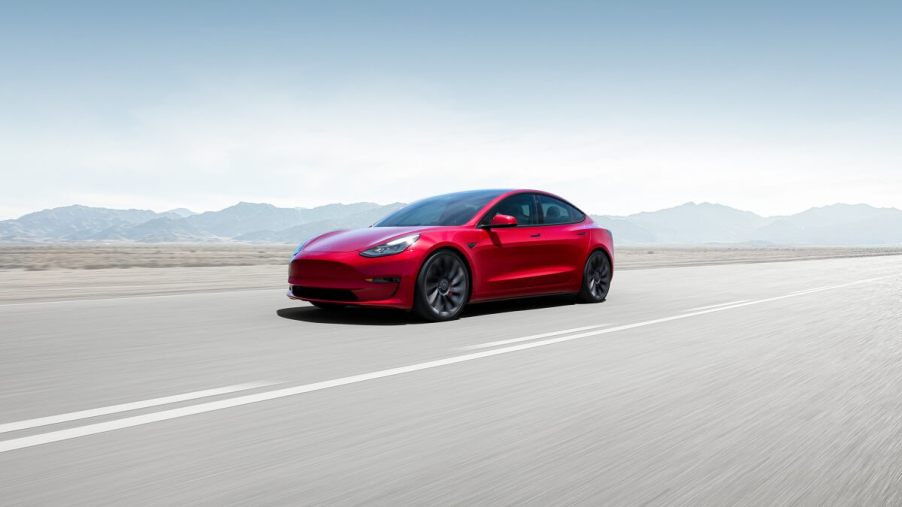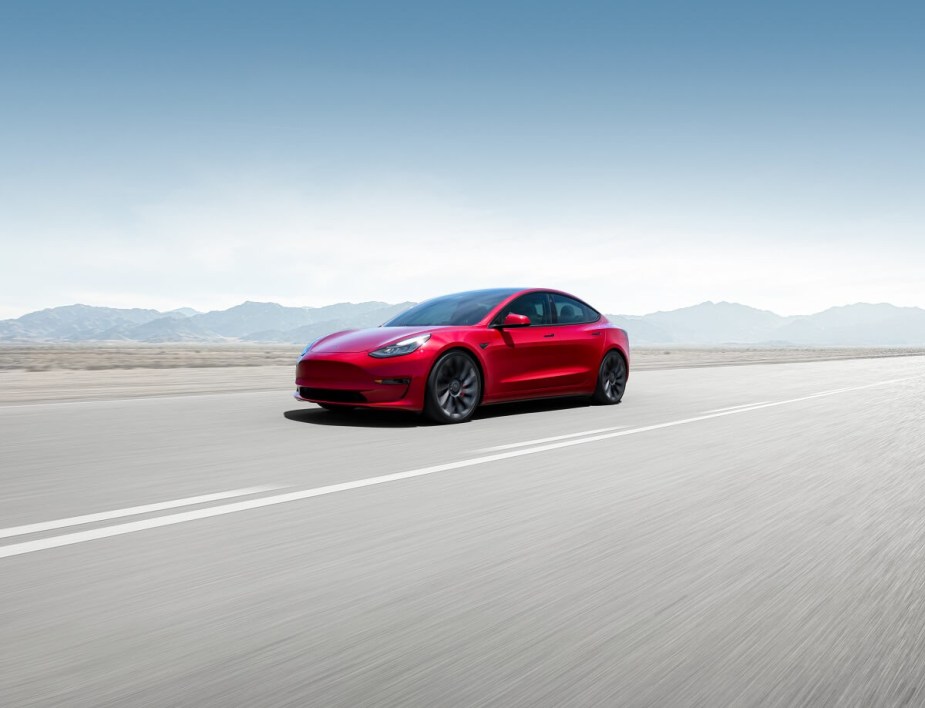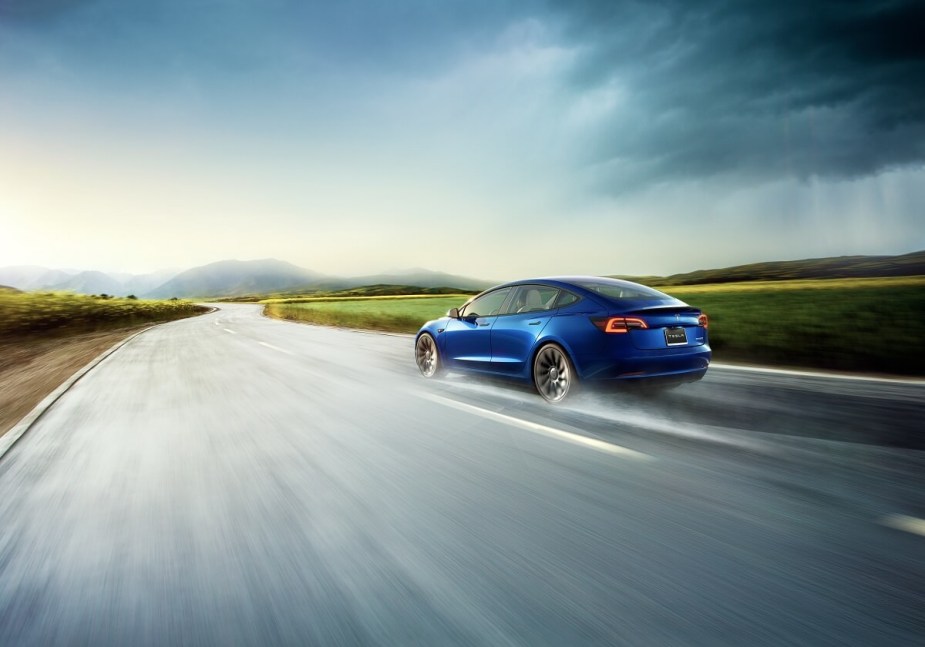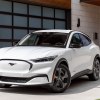
2023 Tesla Model 3 Safety Scores: the Baby Tesla Is a Safe Bet
Tesla’s lineup of luxury electric cars (EVs) has been disruptive to the modern market. Moreover, the electric automaker made the Model 3 to create an accessible EV with a Tesla badge. However, the baby Tesla isn’t exactly a compromise; it has snappy performance, commendable range, and, most importantly, top safety scores. So, is the 2023 Tesla Model 3 a safe bet among other EVs?
Is the Tesla Model 3 a safe car?
The 2023 Tesla Model 3 earned a Top Safety Pick+ rating from the Insurance Institute for Highway Safety (IIHS). It’s the highest rating that the agency gives to vehicles of all types, and it takes crashworthiness and crash avoidance into account. Consequently, the Tesla Model 3 is quite safe.
Moreover, while the National Highway Traffic Safety Administration (NHTSA) hasn’t evaluated the 2023 model yet, the agency gave the 2022 Tesla model a five-star safety score. Like the IIHS’ Top Safety Pick+, a five-star rating is the highest safety score the NHTSA will bestow on a vehicle.
What makes the 2023 Tesla Model 3 safe in a crash?
The 2023 Telsa Model 3 is a dedicated battery electric vehicle (BEV) with no gas-powered engine architecture. As a result, Tesla used more available space to create a strong structure that protects occupants.
Moreover, the baby Tesla has a very slight rollover risk. Specifically, the NHTSA says the Model 3 has a 6.60% chance of rollover in dynamic testing. That’s much less than comparable conventional vehicles like a 2022 Toyota Camry, which has a rollover risk of around 9.90%. Both vehicles are far less prone to rollovers than those with a higher center of gravity, like a tall SUV.

Still, the Model 3’s heavy battery pack resides low on the platform, creating a low concentration of weight and center of gravity. As a result, the Model 3 refuses to roll in dynamic tip testing. Moreover, the Model 3’s roof strength is impressive; the IIHS says it will take up to 20,835 lbs of peak force.
What standard safety features does the 2023 Tesla Model 3 have?
The 2023 Tesla Model 3 carries over much of the safety suite from the 2022 model, including standard forward collision warning, automatic emergency braking, and blind-spot detection, per TrueCar. Moreover, the baby Tesla packs lane departure warning and lane-keeping assist to aid drivers in staying on track.
In addition to standard safety equipment, the Tesla car features Sentry Mode, which Tesla says can activate onboard cameras to catch tampering while the driver is away.

How much safer is a Tesla than a normal car?
The 2023 Tesla Model 3’s IIHS safety rating, inherent resistance to rolling over, and lack of flammable liquids compared to a typical, gas-powered car make it a safe bet.
However, more technology means more potential for things to go awry; TechCrunch says that Tesla’s Autopilot Level 2 autonomous driving architecture had a surplus of crashes with some fatalities. Still, considering the sheer volume of Tesla vehicles on the road with Level 2, it makes sense that the automaker would have more documented crashes than competitors.
Unfortunately, even with top safety scores, EVs can still experience phenomena like thermal runaway, wherein battery packs ignite in a chain reaction and become difficult for emergency crews to extinguish. Of course, automakers are improving battery technology, including insulating and shielding batteries to make them less volatile.



